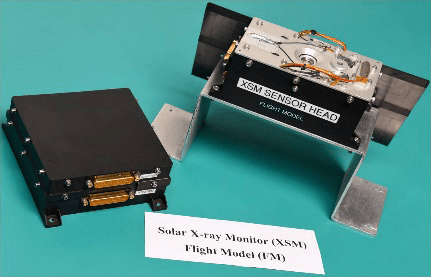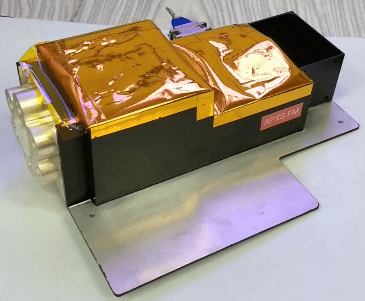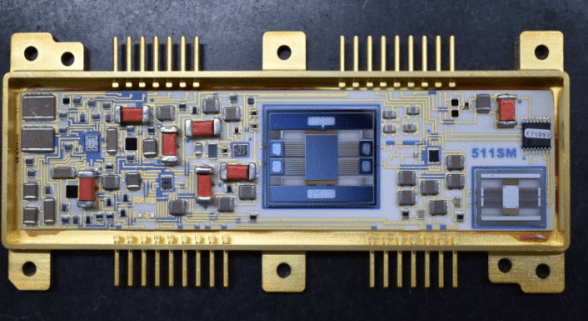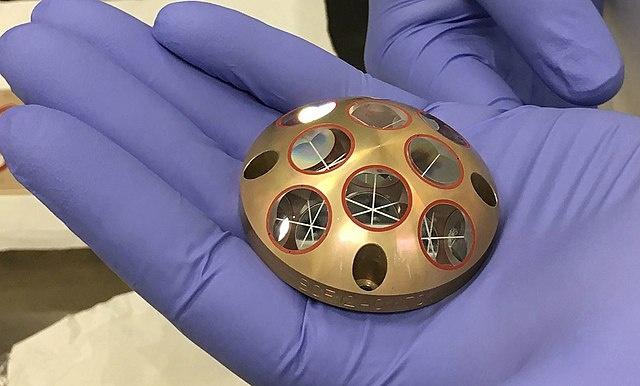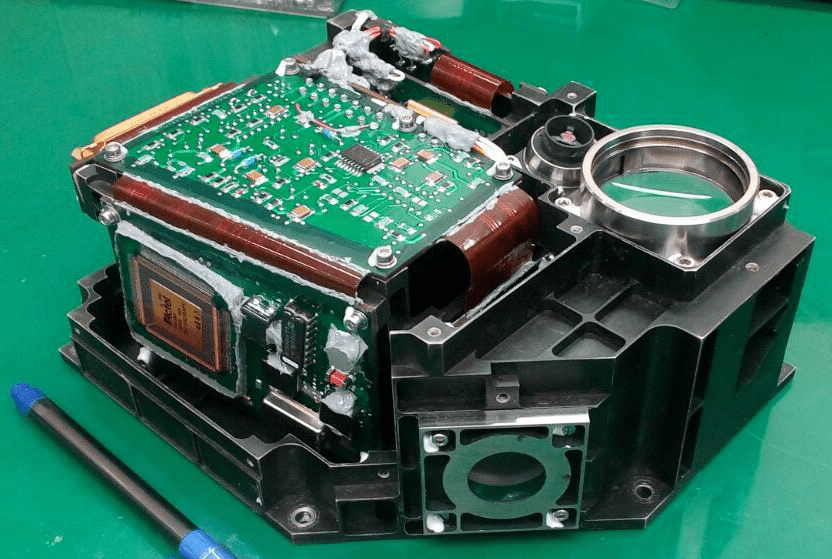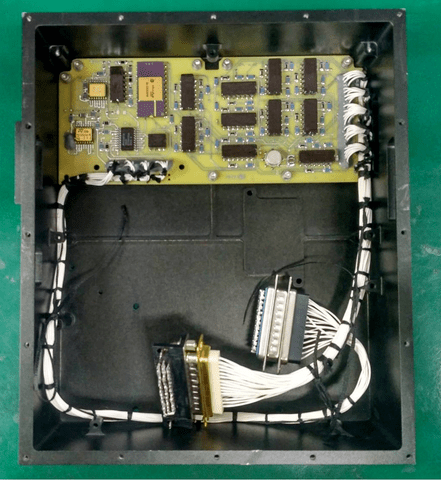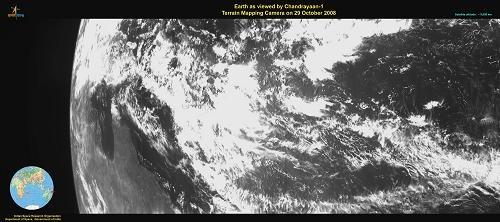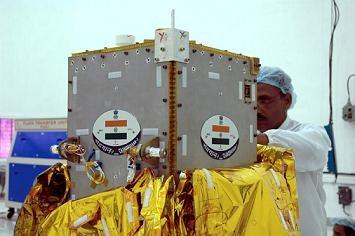ISRO selected eight scientific instruments for the orbiter, four for the lander, and two for the rover. While it was initially reported that NASA and European Space Agency (ESA) would participate in the mission by providing some scientific instruments for the orbiter, ISRO in 2010 had clarified that due to weight restrictions it will not be carrying foreign payloads on the mission. However, in an update a month before launch, an agreement between NASA and Indian Space Research Organisation (ISRO) was signed to include a small laser retroreflector from NASA to the lander's payload to measure the distance between the satellites above and the microreflector on the lunar surface.
Orbiter Payload
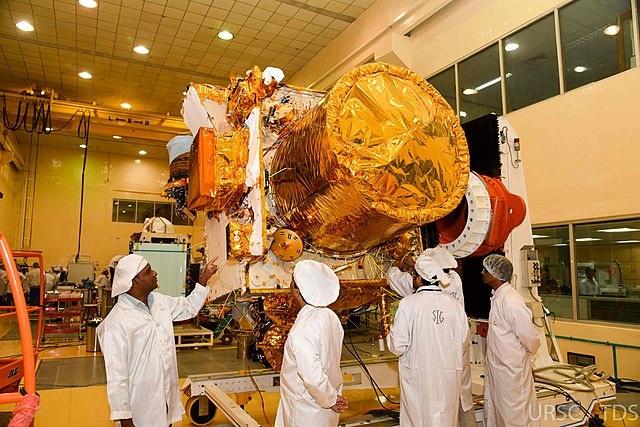
- Chandrayaan-2 Large Area Soft X-ray Spectrometer (CLASS) from the ISRO Satellite Centre (ISAC), which makes use of X-ray fluorescence spectra to determine the elemental composition of the lunar surface
- Solar X-ray monitor (XSM) from Physical Research Laboratory (PRL), Ahmedabad, primarily supports CLASS instrument by providing solar X-ray spectra and intensity measurements as input to it. Additionally these measurements will help in studying various high-energy processes occurring in the solar corona.
- Dual Frequency L-band and S-band Synthetic Aperture Radar (DFSAR) from the Space Applications Centre (SAC) for probing the first few metres of the lunar surface for the presence of different constituents. DFSAR was expected to provide further evidence confirming the presence of water ice, and its distribution below the shadowed regions of the Moon. It has lunar surface penetration depth of 5 m (16 ft) (L-band).
- Imaging IR Spectrometer (IIRS) from the SAC for mapping of lunar surface over a wide wavelength range for the study of minerals, water molecules and hydroxyl present. It featured an extended spectral range (0.8 μm to 5 μm), an improvement over previous lunar missions whose payloads worked up to 3 μm.
- Chandrayaan-2 Atmospheric Compositional Explorer 2 (ChACE-2) Quadrupole Mass Analyzer from Space Physics Laboratory (SPL) to carry out a detailed study of the lunar exosphere
- Terrain Mapping Camera-2 (TMC-2) from SAC for preparing a three-dimensional map essential for studying the lunar mineralogy and geology
- Radio Anatomy of Moon Bound Hypersensitive Ionosphere and Atmosphere – Dual Frequency Radio Science experiment (RAMBHA-DFRS) by SPL for the studying electron density in the lunar ionosphere
- Orbiter High Resolution Camera (OHRC) by SAC for scouting a hazard-free spot prior to landing. Used to help prepare high-resolution topographic maps and digital elevation models of the lunar surface. OHRC had a spatial resolution of 0.32 m (1 ft 1 in) from 100 km (62 mi) polar orbit, which was the best resolution among any lunar orbiter mission to date.
Vikram lander Payloads
The payloads on the Vikram lander were:
- Instrument for Lunar Seismic Activity (ILSA) MEMS based seismometer by LEOS for studying Moon-quakes near the landing site
- Chandra's Surface Thermo-physical Experiment (ChaSTE) thermal probe jointly developed by SPL, Vikram Sarabhai Space Centre (VSSC) and Physical Research Laboratory (PRL), Ahmedabad for estimating the thermal properties of the lunar surface
- RAMBHA-LP Langmuir probe by SPL, VSSC for measuring the density and variation of lunar surface plasma
- A laser retroreflector array (LRA) by the Goddard Space Flight Center for taking precise measurements of distance between the reflector on the lunar surface and satellites in lunar orbit. The microreflector weighed about 22 g (0.78 oz) and cannot be used for taking observations from Earth-based lunar laser stations.
Pragyan rover Payloads
Pragyan rover carried two instruments to determine the abundance of elements near the landing site:
- Laser induced Breakdown Spectroscope (LIBS) from the laboratory for Electro Optic Systems (LEOS), Bangalore
- Alpha Particle Induced X-ray Spectroscope (APXS) from PRL, Ahmedabad
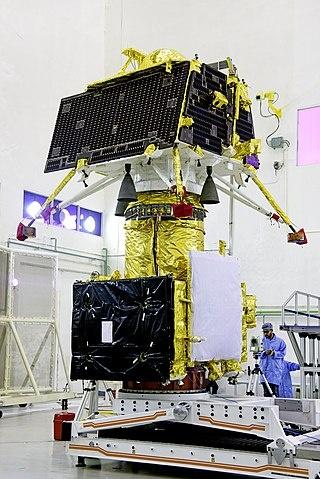
![By [1] (GODL-India), GODL-India, https://commons.wikimedia.org/w/index.php?curid=80364580](/images/chandrayaan/Chandrayaan-2_payloads_CHACE2.png)
